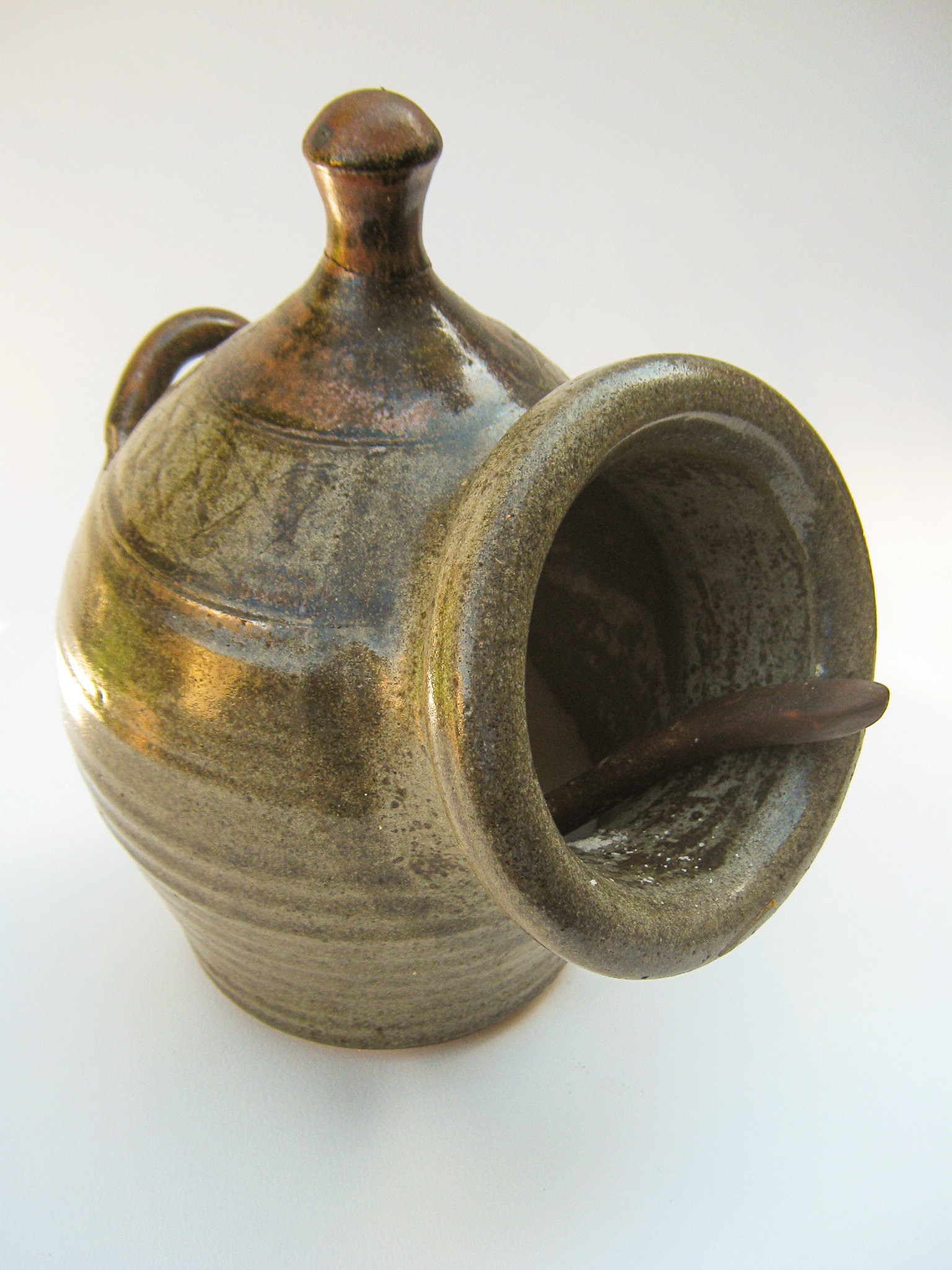Salt Pig on:
[Wikipedia]
[Google]
[Amazon]
 A salt pig is a container used to hold
A salt pig is a container used to hold
 A salt pig is a container used to hold
A salt pig is a container used to hold salt
Salt is a mineral composed primarily of sodium chloride (NaCl), a chemical compound belonging to the larger class of salts; salt in the form of a natural crystalline mineral is known as rock salt or halite. Salt is present in vast quanti ...
, to make it easily accessible to pinch or spoon measure into dishes. They are available in many materials, but are generally ceramic
A ceramic is any of the various hard, brittle, heat-resistant and corrosion-resistant materials made by shaping and then firing an inorganic, nonmetallic material, such as clay, at a high temperature. Common examples are earthenware, porcelai ...
, porcelain
Porcelain () is a ceramic material made by heating substances, generally including materials such as kaolinite, in a kiln to temperatures between . The strength and translucence of porcelain, relative to other types of pottery, arises main ...
, earthenware
Earthenware is glazed or unglazed nonvitreous pottery that has normally been fired below . Basic earthenware, often called terracotta, absorbs liquids such as water. However, earthenware can be made impervious to liquids by coating it with a ce ...
or clay
Clay is a type of fine-grained natural soil material containing clay minerals (hydrous aluminium phyllosilicates, e.g. kaolin, Al2 Si2 O5( OH)4).
Clays develop plasticity when wet, due to a molecular film of water surrounding the clay part ...
.
The earthenware construction of a salt pig can help keep the salt from clumping in humid
Humidity is the concentration of water vapor present in the air. Water vapor, the gaseous state of water, is generally invisible to the human eye. Humidity indicates the likelihood for precipitation, dew, or fog to be present.
Humidity dep ...
kitchens.
According to the blog ''Mundane Essays'', a blog in which writer Muness Alrubaiehis researched the origin of the term "salt pig," the use of "pig" is found in Scots and northern English dialect
The term dialect (from Latin , , from the Ancient Greek word , 'discourse', from , 'through' and , 'I speak') can refer to either of two distinctly different types of linguistic phenomena:
One usage refers to a variety of a language that ...
meaning an earthenware vessel.
References
{{Reflist Food storage containers Kitchenware